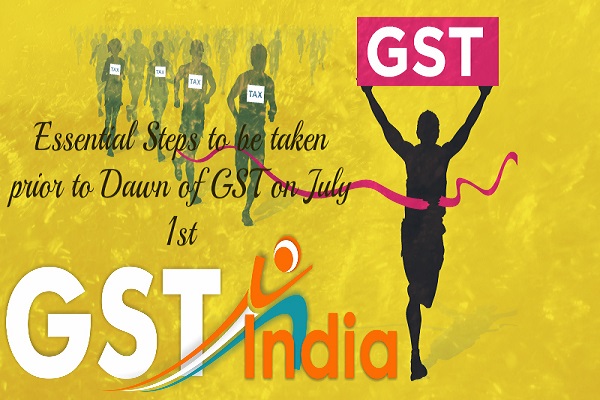GST or Goods and Services Tax is rated as a historical tax reform and every Indian is looking forward to unleashing of ‘one nation one tax’ regime at the stroke of midnight on 30th June 2017. GST is a certainty as the Hon. Finance Minister has said in no uncertain terms that it will be rolled out on 1st July 2017.
GST is poised to envelope a wide array of state, central, and other existing taxes in its fold, thus paving a way for a homogeneous market by offering a singular tax across the length and breadth of India.
Understanding GST
Monitoring and administering tax structure in its present format is highly complex phenomenon since the structure of indirect taxes involves a multilayered collection of several taxes. The current tax regime demands that taxpayer must deal with indirect as well as direct taxes.
In addition to this, the existing system of Value Added Tax provides feature of refund at the central VAT level against taxes and duties incurred up to the production stage. Distribution channels cannot avail set-offs beyond the manufacturing level. It is not possible to get set-off against additional surcharges and duties that are related to central taxes.
Goods and Services Tax or GST is essentially governed by consumption and is founded on principle of consumption oriented taxation in contrast to the current principle of taxation, which is based on origin rather than consumption.
In terms of state VAT system, it is designed only to cover sales since the credit against paid-up taxes can be claimed on VAT that is paid on earlier purchases. The cascading effect of incremental tax burden is the result of this system. The set off benefits cannot be availed on previous purchase related taxes or inputs.
The upcoming GST is focused at levying comprehensive indirect tax in goods manufacturing units and is another form of Value Added Tax.
Tax slabs in GST regime
There is going to be an exemption from the tax to be levied under GST for selected items while most of the items will attract he taxes under slabs of 17 to 18 percent. The approval of taxes as agreed by the governing body of Goods and Services Taxes provides five separate slabs including zero, five, twelve, eighteen, and twenty-eight percent.
GST is going to replace number of existing taxes for simplifying control and administration of taxes. These include Central Excise Duty as well as additional excise duties related to textiles, medical supplies, toiletries, and goods categorized as those of special importance.
Goods and Services Tax will also replace surcharges as well as cess that are associated with supplies of goods or provision of services. Needless to mention, GST will replace CVD, service taxes and special additional custom duties.
A multitude of state taxes are going to be included in GST such as lottery tax, advertisement tax, luxury tax, VAT, all forms of entry taxes, central sales tax (CST), and a host of surcharges and cesses that have been levied by states.
Obvious reforms and benefits of GST
It is very much obvious that there will be no hindrance in smooth movement of goods across state boundaries and the so called inspector raj will cease to harass transporters in GST regime.
Foreign investment will receive excellent boost with the uniformity of taxes all over the country. This will be further backed by ambitious campaigns including Make in India, and Startup India. Indian manufacturing activities will experience remarkable growth and empower the made in India brand with a competitive edge against their foreign counterparts.
GST will have a far reaching impact including rise in employment and will positively enhance GDP followed by a robust growth of economy. GST will help the nation become a highly sought after manufacturing hub and will mitigate overall burden of taxes on manufacturing companies.
Business benefits of GST
Thanks to GST, automation of myriad of forms, returns, and registrations will simplify business processes and eliminate complexities of tax payments. GST is offering a unified portal for smooth interactions and is going to encourage commonality of tax base, returns, and variety of online transactions associated with filing of returns.
Benefits to customers
Uninterrupted flow of input tax credit across the chain of manufacturer, sellers, or service providers will relax the tax burden and prevent cascading effect. Most significantly, GST will curb black money or shady transactions.
Takeaway
Since the GST regime is ushering a uniform economy and is going to provide significant advantages to the national economy, everybody should welcome this historical reform with open mind and open arms. If we begin to implement GST in early stages, then the transition will be smoother than expected.
By incorporating essential changes in business processes, and accounting modules every supplier, buyer, seller, and manufacturer can be a significant part of this amazing and new reform.






 Live Chat
Live Chat